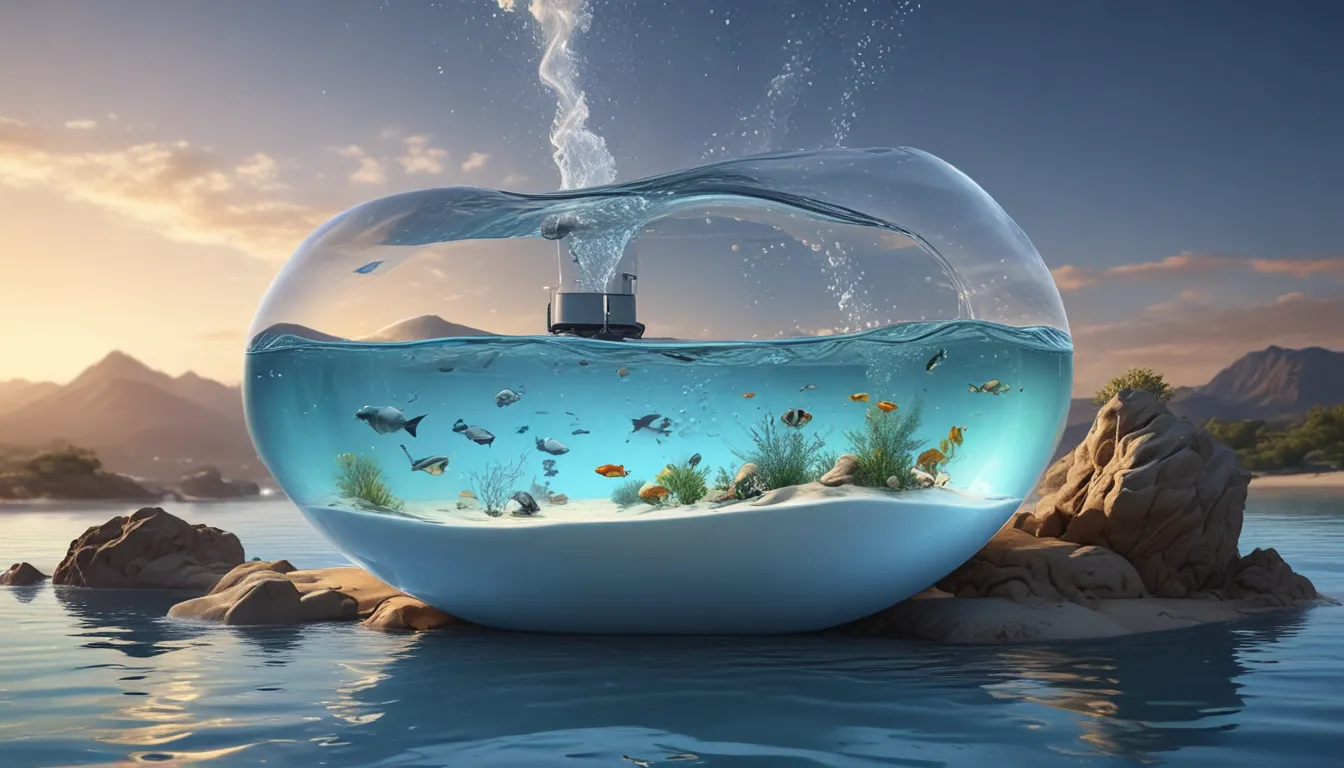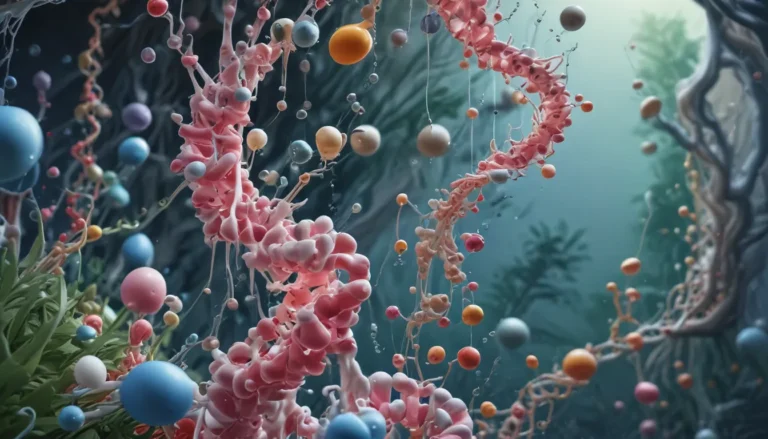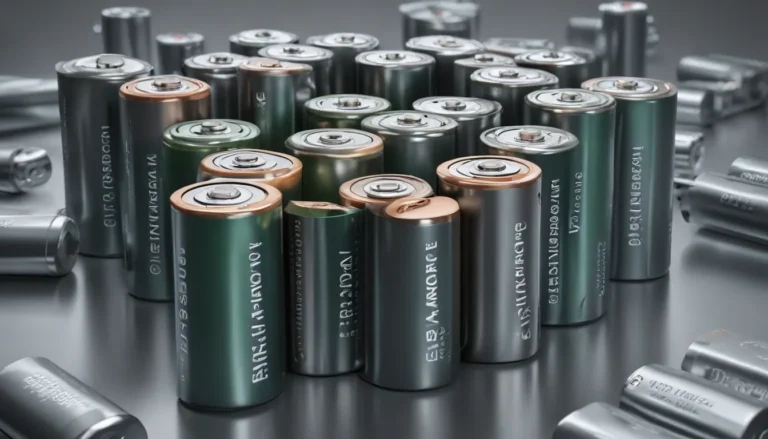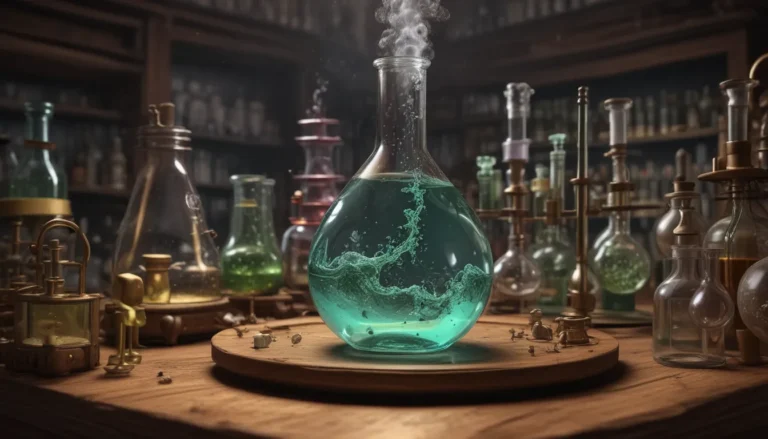A Note About Images: The images used in our articles are for illustration purposes only and may not exactly match the content. They are meant to engage readers, but the text should be relied upon for accurate information.
In the vast and captivating realm of chemistry, one of the foundational concepts that reigns supreme is that of aqueous solutions. These magical mixtures, where substances dissolve in water, are not only ubiquitous in our daily lives but also hold a significant place in the fields of science, industry, and medicine. While most of us are familiar with the basic idea of aqueous solutions, there are some truly unbelievable facts about them that might just leave you in awe. So, buckle up and get ready to embark on a journey through the astounding world of aqueous solutions as we uncover 14 mind-blowing facts that will enhance your understanding and appreciation of this fundamental chemical concept.
Aqueous Solution: The Magic of Dissolving Substances
At the core of an aqueous solution lies the mesmerizing process of dissolving substances in water, resulting in a homogeneous liquid mixture. This phenomenon, while seemingly simple, is a cornerstone of countless chemical processes that occur naturally and artificially in our world. The ability of water to act as a universal solvent and accommodate a wide range of solutes sets the stage for a plethora of fascinating interactions and reactions to take place.
Water: The Universal Solvent
Water’s unique chemical properties, stemming from its polar nature, grant it the title of the universal solvent. The polarity of water molecules allows them to easily separate and disperse ions and polar molecules, making it an ideal medium for dissolving various substances and forming aqueous solutions. This characteristic plays a pivotal role in sustaining life on Earth, as water’s solvent capabilities are essential for many biological processes.
- Key Takeaway: Water’s polar nature enables it to dissolve a wide range of substances, making it a valuable solvent in nature and chemistry.
Everything Can Dissolve in Water
The remarkable aspect of water is its unparalleled ability to dissolve a diverse array of substances, ranging from salts and sugars to acids and even gases like oxygen and carbon dioxide. This extraordinary property of water expands its utility across biological, chemical, and industrial applications, where its role as a solvent is indispensable for driving essential processes and reactions.
Aqueous Solutions Conduct Electricity
One of the intriguing characteristics of aqueous solutions is their capacity to conduct electricity. This phenomenon arises from the presence of ions in the solution, which are formed when ionic compounds dissolve in water and dissociate into positively and negatively charged particles. The free movement of these ions allows for the flow of electric current through the solution, opening doors to a myriad of electrochemical applications and experiments.
pH Levels in Aqueous Solutions
The acidity or alkalinity of an aqueous solution is determined by its pH level, which reflects the concentration of hydrogen ions (H+) present. Solutions with a pH below 7 are considered acidic, while those above 7 are alkaline or basic. A neutral solution, such as pure water, has a pH of 7. Understanding and controlling pH levels in aqueous solutions is crucial in various fields, from biological systems to industrial processes.
- Key Takeaway: Monitoring pH levels in aqueous solutions is essential for maintaining optimal conditions in biological, environmental, and chemical contexts.
Aqueous Solutions and the Human Body
In the intricate tapestry of biological processes that constitute the human body, aqueous solutions play a pivotal role. For instance, blood—the life-sustaining fluid that circulates through our veins—is an aqueous solution that transports vital nutrients, oxygen, and waste products to different parts of the body. Furthermore, the majority of our cells are composed of water-based solutions, highlighting the integral relationship between aqueous chemistry and biological functions.
- Key Takeaway: Aqueous solutions are fundamental in the human body, facilitating essential processes such as nutrient transport and waste removal.
The Power of Aqueous Solutions in Chemistry
The realm of chemistry thrives on the versatility and efficacy of aqueous solutions as a medium for various experiments, reactions, and analyses. Whether it’s dissolving reagents, conducting titrations, or exploring chemical equilibria, aqueous solutions serve as a cornerstone in the laboratory setting. The ability to finely tune the concentration and properties of solutions is paramount in achieving accurate results and advancing our understanding of chemical phenomena.
Aqueous Solutions in Environmental Science
Aqueous solutions assume a crucial role in the realm of environmental science, where they are instrumental in studying water quality, assessing pollution levels, and monitoring ecosystem health. The analysis of aqueous solutions from rivers, lakes, and oceans provides valuable insights into the impact of human activities on aquatic habitats and guides conservation efforts aimed at preserving our natural resources.
- Key Takeaway: Aqueous solutions are essential tools in environmental studies, aiding in the evaluation and protection of our planet’s water systems.
Aqueous Solutions and Medicinal Applications
Within the realm of pharmaceuticals, aqueous solutions serve as a preferred medium for drug delivery and formulation. The solubility of a drug in water plays a crucial role in determining its efficacy, bioavailability, and rate of absorption in the body. Common routes of drug administration, such as intravenous injections and oral suspensions, often rely on aqueous solutions to ensure precise dosing and efficient delivery of therapeutic agents.
- Key Takeaway: Aqueous solutions are integral to pharmaceutical formulations, enhancing the bioavailability and efficacy of medicinal compounds.
The Role of Aqueous Solutions in Food Science
The realm of food science embraces aqueous solutions as indispensable components in processes such as food preservation, flavor extraction, and emulsion stabilization. These solutions act as carriers for essential nutrients, additives, and flavors, aiding in the distribution and enhancement of sensory qualities in food products. The versatility and compatibility of aqueous solutions make them invaluable assets in food processing and production.
Aqueous Solutions and the Creation of Batteries
The world of electrochemistry relies on the interplay of aqueous solutions to power devices such as batteries. In a typical alkaline battery, the electrolyte solution serves as a catalyst for the flow of ions between the battery’s anode and cathode, generating electrical energy in the process. This intricate dance of charged particles within aqueous solutions underpins the functionality of numerous electrochemical devices that drive technological advancements.
- Key Takeaway: Aqueous solutions are integral to the functioning of batteries and other electrochemical systems, enabling the flow of ions and the generation of electrical energy.
The Universal Presence of Aqueous Solutions
Aqueous solutions permeate every facet of our daily existence, from the beverages we consume to the products we utilize in our homes and industries. Whether it’s the cleansing agents that rid our surfaces of grime or the beauty products that enhance our skincare routines, aqueous solutions form the backbone of countless applications that shape our modern lifestyle. The sheer ubiquity of these solutions underscores their importance and versatility across diverse domains.
- Key Takeaway: Aqueous solutions are omnipresent in our daily lives, underpinning the efficacy and functionality of a wide range of products and processes.
Aqueous Solutions and Chemical Equations
In the language of chemistry, aqueous solutions are denoted by the symbol “(aq)” following a chemical formula, signifying that the compound is dissolved in water. This notation serves as a shorthand in chemical equations to indicate the presence of aqueous solutions and the interactions that take place within them. By incorporating aqueous solutions into chemical equations, researchers and students can depict realistic scenarios and predict outcomes with greater accuracy.
Aqueous Solutions: The Foundation of Life
From the vast expanses of oceans to the microscopic realms within our cells, aqueous solutions stand as the foundation upon which life as we know it flourishes. The presence of water-based solutions not only sustains biological processes but also catalyzes chemical reactions and interactions that are essential for maintaining the delicate balance of ecosystems. A deep appreciation for the role of aqueous solutions in shaping the fabric of life on Earth underscores the profound impact of these remarkable entities.
Conclusion
In the tapestry of chemistry, aqueous solutions emerge as pivotal players, shaping the landscapes of scientific exploration and societal advancement. Their ability to dissolve, conduct, and catalyze processes transcends boundaries, encompassing fields as diverse as medicine, industry, and environmental science. By unraveling the mysteries hidden within aqueous solutions and harnessing their potential, we pave the way for continued innovation and discovery in the realm of chemistry. As we navigate through the wonders of these solutions, may we find inspiration and insight in their intricate properties and far-reaching implications.
FAQs
Q: What is an aqueous solution?
A: An aqueous solution is a homogeneous mixture in which a substance is dissolved in water, resulting in a uniform liquid medium. These solutions are prevalent in various chemical reactions and biological processes, playing a pivotal role in facilitating interactions and transformations.
Q: What are some examples of aqueous solutions?
A: Common examples of aqueous solutions include saltwater (sodium chloride dissolved in water), sugar solutions, and solutions of acids and bases. These solutions showcase the diverse range of substances that can dissolve in water and form stable mixtures.
Q: Why are aqueous solutions important in chemistry?
A: Aqueous solutions serve as essential components in chemical reactions, acting as mediums for reactions to occur and facilitating the transport of ions and molecules. Their ability to dissolve a wide array of substances makes them instrumental in driving chemical processes and experimental studies.
Q: How do aqueous solutions conduct electricity?
A: The conductive nature of aqueous solutions stems from the presence of ions that are free to move within the solution, carrying electric charge. When ionic compounds dissolve in water, they dissociate into ions that enable the flow of electrical current, making aqueous solutions conductive.
Q: Are all substances soluble in water?
A: Not all substances are soluble in water, as solubility depends on the nature of the substance and the intermolecular forces at play. While many compounds exhibit varying levels of solubility in water, some substances are insoluble or only partially soluble in aqueous solutions.
Q: How are aqueous solutions used in everyday life?
A: Aqueous solutions find a multitude of applications in daily living, from drinking and cooking with water to using cleaning agents and beauty products that contain aqueous components. These solutions permeate various aspects of our lives, showcasing their versatility and indispensability in modern society.
Expand Your Horizons in the World of Aqueous Chemistry
As we journey through the captivating world of aqueous solutions, we uncover a myriad of facts and insights that shed light on the extraordinary properties and applications of these remarkable entities. From their role in biological systems to their influence on chemical reactions, aqueous solutions stand as beacons of innovation and discovery, driving progress in diverse scientific disciplines. As we delve deeper into the mysteries and marvels of aqueous chemistry, let us continue to embrace the wonders that unfold before us, inspiring curiosity and unlocking new avenues of exploration. Join us in celebrating the magic of aqueous solutions and the boundless opportunities they present for discovery, learning, and growth in the captivating realm of chemistry.






